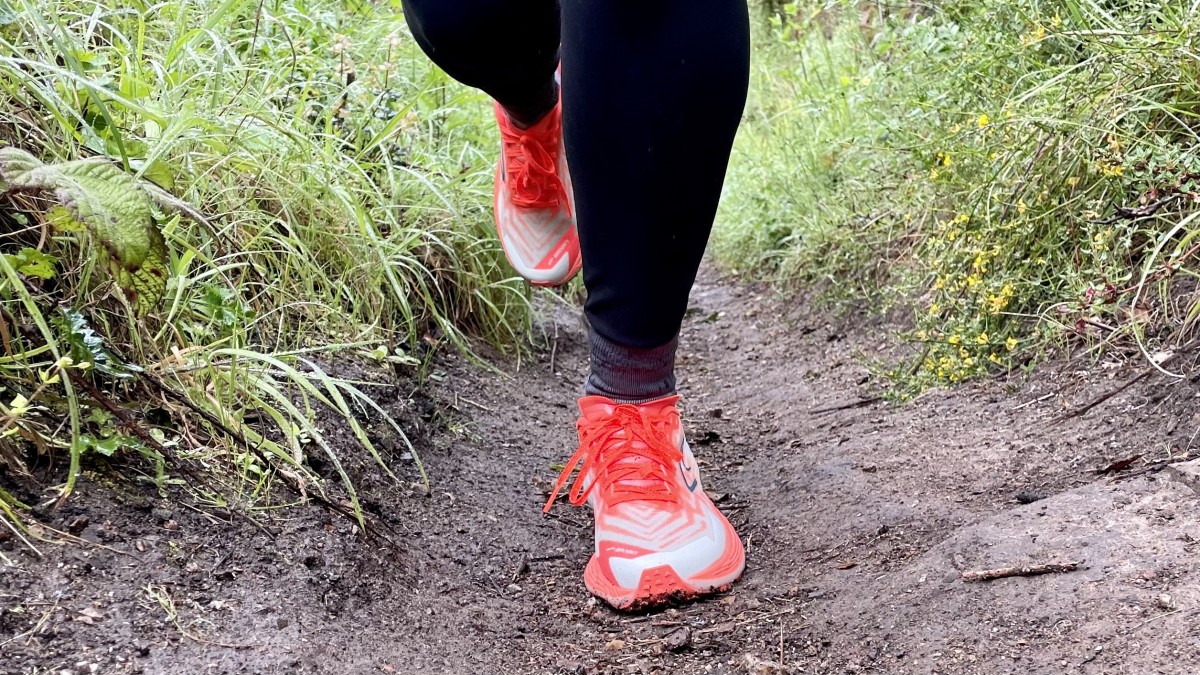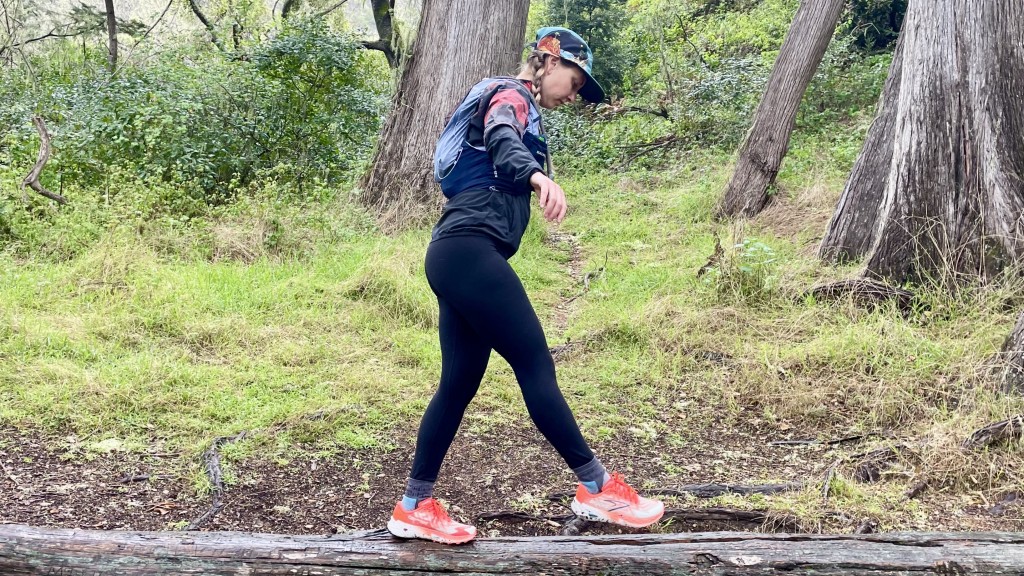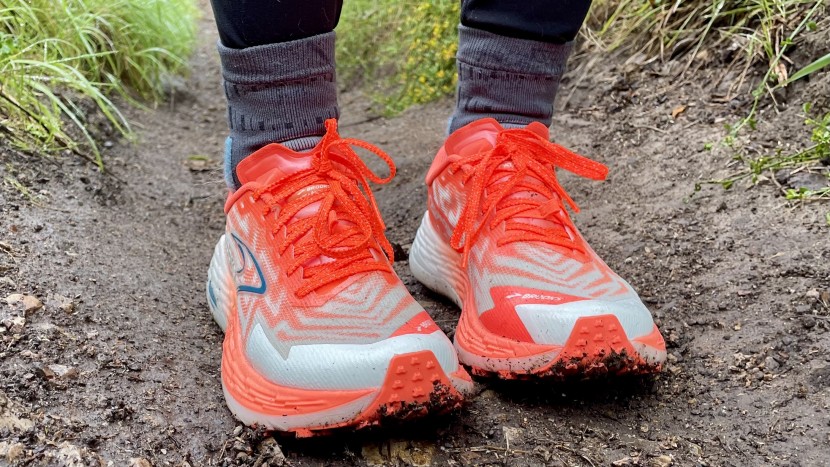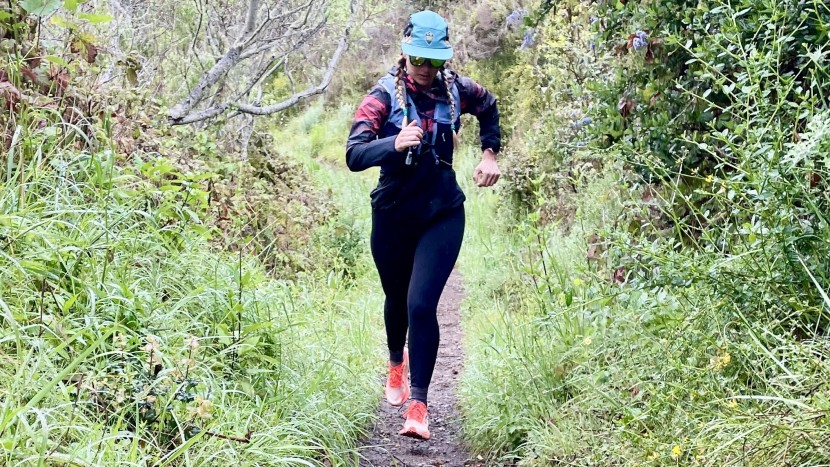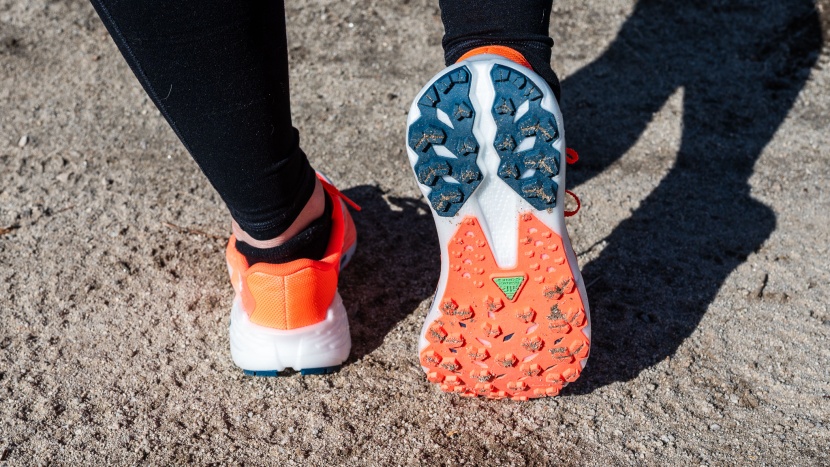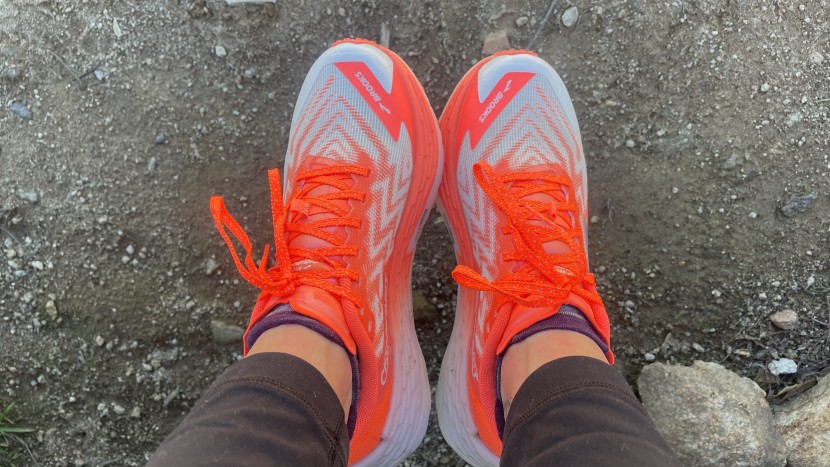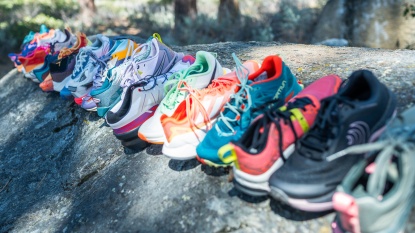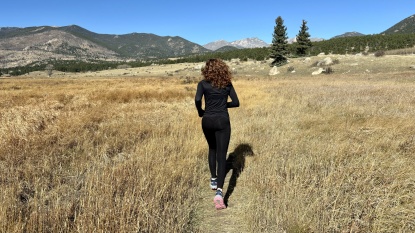
Our Verdict
Our Analysis and Test Results
At 7.62 ounces (women's size 6.5 shoe) with a 7 mm drop, a SkyVault plate for propulsion, and an overall slender fit, the Brooks Catamount 4 has the makings of a trail racing shoe. Brooks has made substantial updates to the Catamount, though it still lacks some of the burly tech of its trail running counterparts.
Comfort and Fit
The updated Brooks Catamount is noticeably comfortable, though it does run slightly on the narrow side. Brooks added a bit of additional cushion to the midsole, but they seem to have redesigned their foams to be a bit more rigid underfoot. The result is a firm yet well-cushioned shoe that stands 30 mm off the ground in the heel — only 2 mm higher than its predecessor. This extra cushion allows the Catamount to be a longer-distance running contender in ways that previous versions couldn't. Even still, the Catamount is best suited for shorter distances.
The upper mesh is profoundly breathable, adding a nice level of breathability during warm-weather running. Even with the updated comfort features, the Catamount is a more minimal take on a trail racing shoe. It's a lower-volume shoe, so runners seeking a beefy heel collar need not apply here. We found the Catamount to be perfectly comfortable on both long and short runs, though its comfort still lacks some of the spark of other trail running shoes.
Stability
The Catamount 4 delivers a surprisingly stable ride, partly thanks to its firm sidewalls and secure heel collar. Its trim fit, especially in the rearfoot, helps lock things in place, giving runners confident control on twisting trails. Designed as a neutral shoe, the Catamount skips added support structures in favor of a smartly designed mesh upper that holds the foot securely. It's a solid match for runners who want a light, responsive feel without sacrificing precision or stability during quick shifts and turns on flowy singletrack.
Traction
The reconfigured outsole of the Catamount is pretty awesome. The TrailTack Green materials come together with lugs facing in all directions, ensuring a 360-degree confidence check on most terrain types. Each of the dual-paned chevron-shaped lugs stands at 3.4 mm high. The Catamount doesn't have the tallest lug profile around, but its well-placed lugs with sharp edges veering in all directions offer a secure hold on most moderate terrain types. Much like the Catamount 3, with its multidirectional lugs and a touch of outsole flexibility, this version handles singletrack trails and fire roads with ease.
Its fit and outsole design support agile movement, making it an excellent pick for fast, focused trail runs with only moderate technicality. The Catamount balances protection and trail feel, with its propulsive SkyVault plate adding just enough firmness to safeguard your feet without muting ground feedback. While not the most connected shoe available, it offers solid-feeling traction that suits runners tackling moderate trails.
Foot Protection
The Catamount 4 features a 30 mm stack in the heel and 23 mm in the forefoot, and features a SkyVault plate giving it decent underfoot protection. While the forefoot rides low, the midsole materials work well together to provide a balance of cushioning and trail feel.
Up top, the thin, breathable upper sacrifices some structure and can feel a bit porous. The thin weave of the upper mesh is super comfortable, but not the most protective. The low-profile heel collar isn't especially padded, which may allow trail debris to sneak in, depending on your foot shape.
Up front, the toe cap is minimal but effective, delivering just enough protection for moderate terrain without adding extra bulk. The Catamount's foot protection, traction, and moderate weight make it a nearly ideal shoe for sandy single tracks.
Weight
Each women's size 6.5 shoe weighs 7.62 ounces, making the Catamount lighter than many of the more rugged trail shoes we've tested. Even though this version of the Catamount weighs more than its predecessor (which was 7.19 ounces per shoe), we love how it is a moderate trail shoe that doesn't needlessly add weight or bulk. The Catamount's medium-low weight is great for days when you want to pick up the pace and see what kind of power may be lurking in your legs.
Should You Buy the Brooks Catamount 4?
Brooks has made some serious strides with its updates to the Catamount. While this shoe doesn't exactly top our short list of trail shoes to race in, it is getting there. The SkyVault plate offers a nice amount of propulsion, and the overall price tag of the shoe isn't as daunting as other plated options. If you have wide feet, we recommend a different shoe, but runners with slender to average feet will likely succeed in the breathable and spry Brooks Catamount 4.
What Other Trail Running Shoes Should You Consider?
The La Sportiva Prodigio Pro is a higher-tech feeling trail shoe offering nearly the same metrics spread as the Catamount. With a bit more comfort and a more secure heel collar, the Prodigio Pro is a shoe that is more well-equipped for technical running. If you love the idea of a plated shoe but want something with a bit more cushion, the Hoka Tecton X 3 is a great contender to consider. The Tecton X3 is a bit heavier but offers stronger comfort with a thinner underfoot plate. For a similar underfoot experience with a more forgiving upper, the Brooks Cascadia 18 is a traction-heavy yet versatile trail shoe to consider.
| Awards | |
|---|---|
| Price | $170 List Check Amazon (on sale!) |
Overall Score  |
|
| Star Rating | |
| Bottom Line | A firmer midsole, reliable traction, and eco-conscious touches make this model a solid pick for narrow-footed runners seeking speed and versatility |
| Pros | Comfortable upper, tacky outsole, updated breathability, energetic plate, balanced minimalism |
| Cons | Still lags behind competitors, firm midsole |
| Rating Categories | Brooks Catamount 4 |
| Comfort and Fit (40%) | |
| Stability (25%) | |
| Traction (15%) | |
| Foot Protection (15%) | |
| Weight (5%) | |
| Specifications | Brooks Catamount 4 |
| Measured Heel Stack Height | 30 mm |
| Measured Heel-to-Toe Drop | 7 mm |
| Rock Plate | SkyVault plate |
| Measured Lug Depth | 3.4 mm |
| Measured Weight | 7.62 oz |
| Upper | Mesh |
| Midsole | DNA Flash v2 |
| Outsole | TrailTack Green |
| Sizes Available | 5 - 12 US regular |
| Heel Tab Type | None |
| Claimed Heel-to-Toe Drop | 6 mm |


